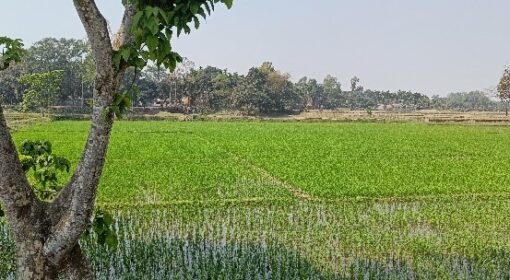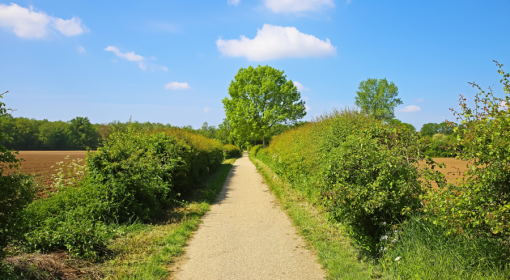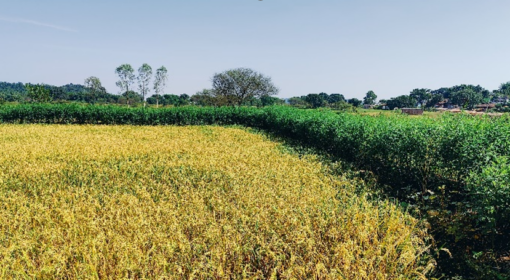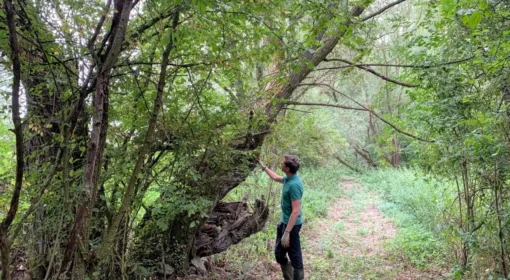By Ilja Keukenkamp
This blog is the second part of a series of blogs on the potential of hedges as green corridors. To understand the challenges in agriculture and role of hedges, please refer to the second blog, available here.
Introduction
View from Kumarpara in Cooch Behar in India. Hedges can make a central contribution to many of the challenges that exist amongst the farming community in rural India. They can help in reducing the nuisance of free-roaming cattle, be a source of valuable biomass in the transition towards sustainable agriculture, retain water, benefit the local climate, boost biodiversity, and add to the income of the people. In places like in North Bengal in India they can possibly being a solution for the occasional elephant rampage.
Where to have which hedge is a matter. There is not one species that can be planted everywhere and address all problems, and nor are all places suitable for hedges. Among hedges there are many variations in height, density and number of row. Farmers have their own different priorities, and every location differs in soil, climate, slope etc which effects the planning and design of hedges.
Where
In Kumarpara there are many different land-use types close together. Tea gardens next to agricultural fields, closed in by protected forest area and flanked by a river. Differences in elevation, proximity to the forest and river and the way the farmland is being cultivated, plays a determining role in the shapes, uses and functions of a hedge.
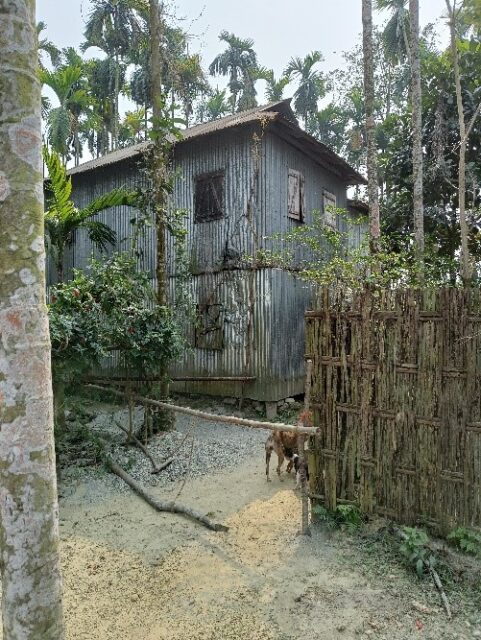
Near the forest in Kumarpara, elephants are a big nuisance. During an interview with one of the farmers from the area, he explained that a family of 5 elephants live in the forest nearby, regularly takes a stroll out of the forest. The elephants have a strong mind and a strong body, and will move wherever they want, causing destruction wherever they go. In principle, hedges could play a role in deterring elephants to go to places where they could cause damages to properties. Disrupting travel paths of elephants and redirecting them to places where they can cause less damage might help in reducing the harmful influence they have on the people and on the land. How successful hedges would be at this however, is highly uncertain.
Hedges should, when placed, not interfere too much with the day to day movement of people through the village. Often, when people move from household to household through fields when they are unplanted, and when the fields are full of crops, people often use the bunds in between fields to move. These bunds are small, and have been becoming smaller over the years in order to maximise the cultivable surface. Placing hedges on these bunds would hinder peoples movement throughout the area, and would thus not be very popular with the people. Locations where hedge and human can live side by side need to be chosen with care and consensus.
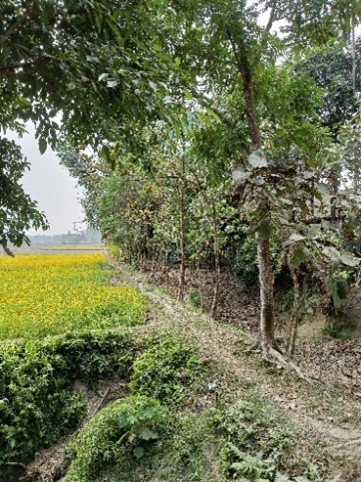
Considering the fact that the land holding size and the space between individual fields is so small, it is much more likely for hedge to be placed around surrounding larger combined pieces of land where there is actually space to plant them. Take for example the roads running through the area, close next to the road, there is a lot of unused space where hedges could make use of. In other parts of the world, having hedges along roads was a effective way to keep cattle from straying in the fields and to get them to go where they were intended and also not to interfere with traffic.
What
So what species can be used then? For different purposes there are different species that can fulfil different roles. Hedges that should protect from cattle are different than those that should bare fruits, whilst for biomass production there are again more and less suitable species. Some hedges, because of their proximity to crops should minimally influence their surroundings, and some hedge should be easy to maintain because of their location.
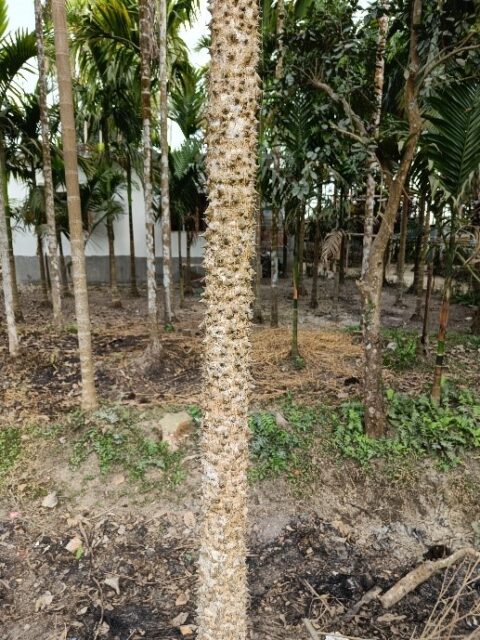
Hedges that should stop cattle from passing through them need some obvious characteristics: they should be impenetrable by goats, cows and pigs. Thorny hedges can be very suitable against goats, to control the movement of these otherwise voracious animals. For cows and pigs its favourable to have a hedge that poses a sturdy physical barrier.
A hedge that should give resistance to elephants should have different characteristics altogether, elephants are great strong animals that can move figurative mountains if they want to. The only way to stop an elephant from going somewhere you don’t want it to go, is to change its mind. To give an example of their ingenuity to go places they’re not allowed: surrounding the forest, there is a fence that gets electrified every now and then. When electrified, elephants don’t like going through them. Elephants in Kumarpara do check whether the fence is electrified, is that they grab a leaf with their trunk, they place this on the wire, and then when they don’t see sparks, they know that it is safe to pass the fence.
When looking at hedges against elephants, the only way to create a possibly successful barrier against these incredibly smart and strong minded creatures, is to make them out of species that elephants would want to avoid. Lemon trees and the Indian Cotton Tree are possible contenders. Elephants are known to dislike lemon trees, perhaps for their smell, and perhaps for the spikes that are in the trunk. The Indian Cotton Tree is interesting as it is a strong tree with large spikes on its trunk. The Indian Cotton Tree, however, doesn’t keep its spikes when it grows tall.
A hedge that should bear fruit should do just that, bear fruit. Not all plant species that bear fruit are relevant in the Kumarpara region, fruit species that have market value are more suited to be planted since these can offer additional income.
How
Initially when placing hedges, they are quite vulnerable as they can be trampled or eaten by animals. To ensure the establishment of a hedge, careful protection and maintenance is therefore needed. Also, discussions with local groups should be done before deciding on where and what to plant. It is imperative to keep the needs and demands of the people in mind.
Additionally, as they bring benefits the important issue is of who is responsible for protecting and maintenance. In case of private lands, the answer is simple. However, for common lands social institutions play a critical role. For example, women in Self Help Groups can work together with other villagers to create a maintenance chart.
Way ahead
Now these blogs are focussed on Kumarpara, however, the potential of hedges doesn’t stop here. Hedges can be a pivotal landscape feature all over the world and should definitely be considered wherever large-scale projects are considered. As indicated in this blog, hedges can serve many different purposes, and have to deal with many different circumstances in order to be successful. To find the best fitting hedge for every location, careful consideration should be given to the local needs and conditions, and, when this is done, hedges can change many lives and landscapes for the better.
Prepared as part of Agricultural Transition through Productive Biodiversity and Nature-Based Solutions Project.
